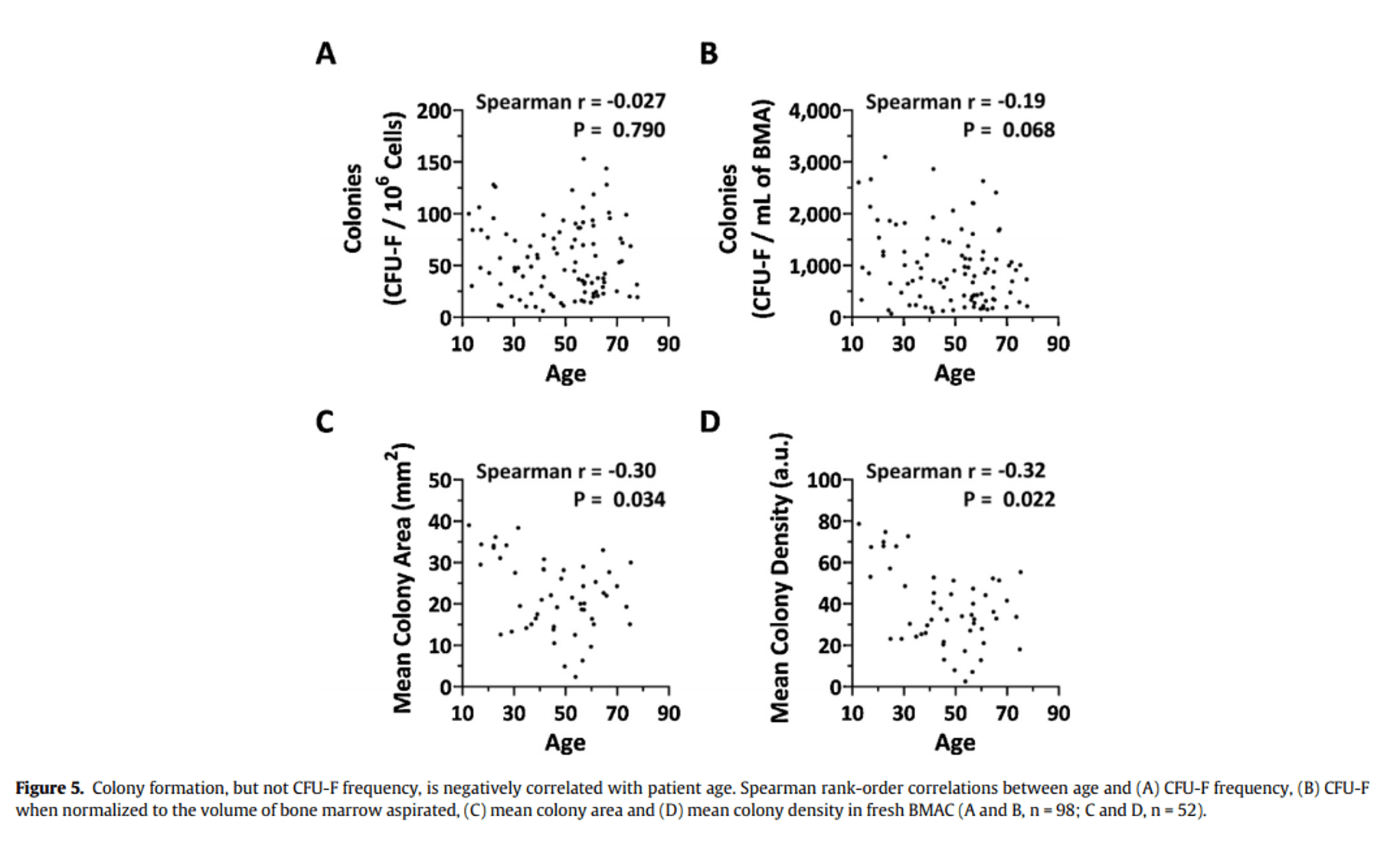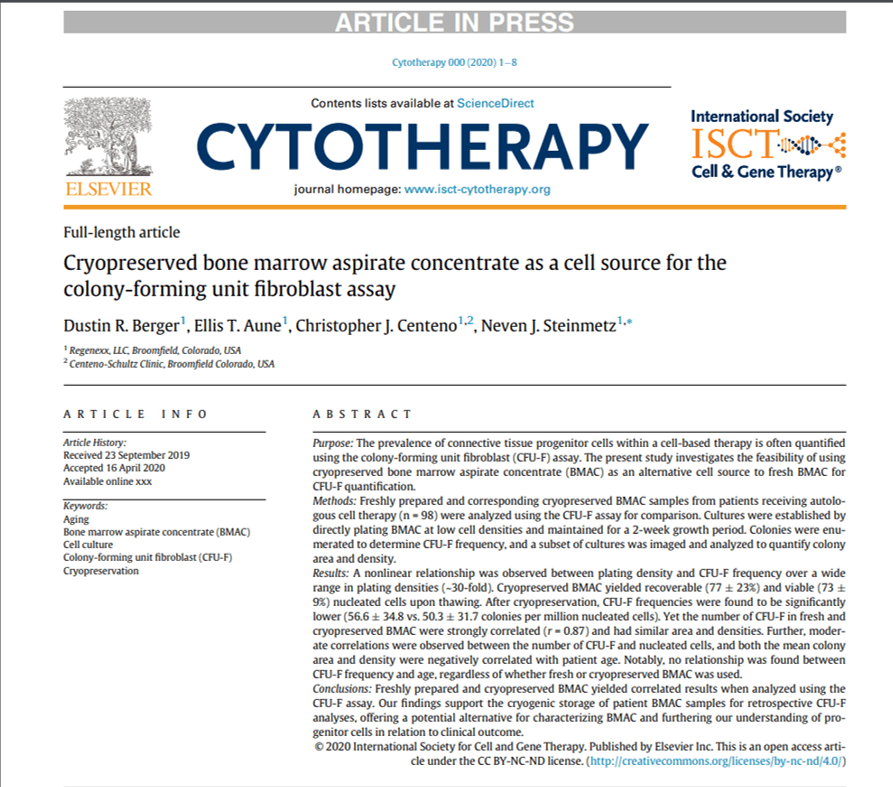Our New Scientific Paper on Stem Cell Dosing: This Changes Everything
There are very few companies treating patients in regen med that publish any kind of research. We at Regenexx have always been different. As an example, our most recent scientific publication now allows anyone to determine the dose of stem cells in a time-efficient manner whereas the old way was clunky, slow, expensive, and time-consuming. Let’s dig into how stem cells are usually dosed and why this new research paper is such a big deal.
Stem Cell Dosing 101
While our new paper concerns the same-day stem cell treatment known as bone marrow concentrate, let’s go over stem cell dosing in general for all types of treatments:
No Dose?
The first thing to know is that more than 99% of treatments called stem cells being delivered to patients today have no real dosing component. That’s pretty amazing since the bedrock of modern medicine is that if something is injected into you, we should know the dose. Is it too low? Is it too high? Or is it just right? Regrettably, your doctor likely has no idea.
Why does this happen? When it comes to autologous biologics like bone marrow or fat, almost nobody is measuring the dose. The doctor places bone marrow or fat into a kit or centrifuge, pushes the “ON” button, and injects whatever comes out. He or she doesn’t know the dose because the machine doesn’t count it, and the doctor doesn’t take the time nor have the equipment needed to count the dose. Even if he or she did know the dose, the medical provider has no research to benchmark that against. Why? That would take research looking at various doses against the outcome of the treatment and few if any of the companies that make these kits and machines have done that research.
That last point brings us to birth tissues like amniotic tissue/fluid or umbilical cord blood/Wharton’s Jelly. While the doctor may be told that there are a certain number of cells in the vial he or she buys, this is not a stem cell count, but only a total cell count. Many providers confuse this issue and believe that the 40 million cells it says in the paperwork constitute a stem cell count. First, all of the cells are functionally dead or will soon be dead, so there are no living stem cells in these vials of birth tissues. Second, many physicians don’t know that a tiny percentage of these cells are stem cells. Third, even if the doctor knew all of that, there is no dosing research published on the use of these types of products. Hence, while it seems like the doctor has a little more info, he or she is still really flying blind on the dose.
To learn more on the fact that birth tissues used by clinics have no living stem cells, see my video below:
TNCC
For the handful of clinics that do calculate a stem cell dose, like our Regenexx clinics, they often use TNCC. This stands for Total Nucleated Cell Count. This means that you know the total number of cells in the sample of which a small percentage are stem cells. The good news is that, in general, as the total number of cells goes up, so does the number of stem cells. Our research group published a proof of concept paper years ago that showed that by measuring this number, we were able to find a minimum dose associated with better outcomes in knee arthritis patients (1). The great news about using this dosing method is that you can do it while you’re processing cells so that the doctor can use it to make clinical decisions. As an example, only about 1 in 3 women over 60 will have enough cells to treat both knees, so being able to tell which patients don’t have that number of cells allows the doctor to focus on one knee at a time.
Flow Cytometry
Flow cytometry is a sophisticated technology where a machine uses LASERs to detect the markers on the surface of cells to identify them. While this tech can ID stem cells and provide a count, the biggest issue is that the machine takes a Ph.D. to run and is usually only found in university labs. While we have two of these machines in our Regenexx research lab, neither would be practical for anything other than research. Meaning, using them to get stem cell counts to guide treatment would be slow, clunky, expensive, and not practical.
Some clinics use what I have come to know as fake flow cytometry. These are small handheld counters that don’t really allow you to count stem cells. However, the clinic uses them as if they were really counting stem cells.
CFU-F

CFU stands for “Colony Forming Unit” and the “-F” stands for “Fibroblast”. This is a lab method of counting stem cell colonies that grow in a flask and using that number as a rough metric of the number of stem cells in a sample (the purple dots above). This has become the research “Gold Standard” for determining the dose of stem cells used in treatment. The big problem is that since this involves growing cells, it takes a long-time to get this data. Hence, it’s not available for the doctor to use to make clinical decisions like treating one knee or two.
The other issue with CFU-F is that it’s mostly a research-based metric. Even this isn’t easy. If you treat 3 patients in a stem cell study and you want to know the stem cell dose, a lab tech has to run three CFU-F assays. That takes time and is not very efficient. Why? Running one CFU-F assay takes x amount of time, but running 10 doesn’t take 10x your time. In fact, only about 2-3x your time.
Our New Retro CFU-F Assay
What the stodgy world of CFU assays has needed is a shakeup. Meaning, what if rather than having to run a CFU-F assay every time we treat a patient, we were able to save the cells in cryopreservation and run 100 of these at once? That would save an immense amount of time.
The basic idea here is that instead of running a CFU test when we see a patient, we cryopreserve those cells (freeze them) to run them later in large batches. Since there is a loss of some of the cells in this mixed cell population, we needed a conversion metric that would allow us to compare fresh CFU-f measurements to frozen. That metric and the data behind it was published below:
What Does this Paper Change?
Physicians interested in running CFU-F dose assays can now save bone marrow concentrate samples in a cryo tank at their offices and send those frozen to a lab for analysis at a later date. That will make getting this data MUCH cheaper. It also means that you no longer need an in-house lab like the one we have at our Regenexx Colorado HQ. All you need is a cheap liquid nitrogen dewar to save cells.
What Else Did We Find?
Much has been made of the idea that the number of stem cells in your bone marrow rapidly declines with age. However, we looked at one of the world’s largest datasets and didn’t find that the number of stem cells in the bone marrow declined with age:

All we did find was that the activity of the cells declined with age (fewer cells grow from each stem cell).
The upshot? I’m very proud of our science team for getting yet another excellent paper published. In addition, this research doesn’t only help our science team at Regenexx, but all physicians who want to know the dose of what they’re injecting. It also makes that data much more accessible to the average physician practice interested in research.
_______________________________________________
References:
(1) Centeno CJ, Al-Sayegh H, Bashir J, Goodyear S, Freeman MD. A dose response analysis of a specific bone marrow concentrate treatment protocol for knee osteoarthritis. BMC Musculoskelet Disord. 2015;16:258. Published 2015 Sep 18. doi:10.1186/s12891-015-0714-z

If you have questions or comments about this blog post, please email us at [email protected]
NOTE: This blog post provides general information to help the reader better understand regenerative medicine, musculoskeletal health, and related subjects. All content provided in this blog, website, or any linked materials, including text, graphics, images, patient profiles, outcomes, and information, are not intended and should not be considered or used as a substitute for medical advice, diagnosis, or treatment. Please always consult with a professional and certified healthcare provider to discuss if a treatment is right for you.
